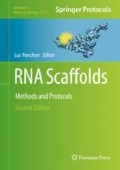Abstract
Spontaneous tumor regression following bacterial infection has been observed for hundreds of years. These observations along with anecdotal medical findings in 1890s led to the development of Coley’s “toxins,” consisting of killed Streptococcus pyogenes and Serratia marcescens bacteria, as the first cancer immunotherapy. The use of this approach, however, was not widely accepted at the time especially after the introduction of radiation therapy as a treatment for cancer in the early 1900s. Over the last 30–40 years there has been renewed interest in the use of bacteria to treat human solid tumors. This is based on the observation that various nonpathogenic anaerobic bacteria can infiltrate and replicate within solid tumors when given intravenously. Bacteria tested as potential anticancer agents include the Gram-positive obligate anaerobes Bifidobacterium and Clostridium, as well as the gram-negative facultative anaerobe Salmonella. Recent advances in synthetic biology and clinical success in cancer immunotherapy provide renewed momentum for developing bacteria-based cancer immunotherapy for cancer treatment and should allow greater potential for the development of novel therapeutic approaches for this devastating disease.
Access this chapter
Tax calculation will be finalised at checkout
Purchases are for personal use only
References
Zaidi N, Jaffee EM (2019) Immunotherapy transforms cancer treatment. J Clin Invest 129(1):46–47
Yang Y (2015) Cancer immunotherapy: harnessing the immune system to Battle cancer. J Clin Invest 125(9):3335–3337
Ebbell B (1937) The papyrus Ebers: the greatest Egyptian medical document. Oxford University Press, London
Tanchou S (1844) Recherches sur le traitement médical des tumeurs cancéreuses du sein. Ouvrage practique basé sur trois cents observations (extraits d’un grand nombre d’auteurs). Paris: G Baillière,
Dussaussoy (1787). Dissertations et observations sur la gangrène dans les hôpitaux. Lyon
Busch W (1868) Niederrheinische Gesellshaft fur Natur und Heilkunde in Bonn. Berlin Klin Wochenschr 5:137–138
Fehleisen F (1886) On erysipelas. In: Cheyne WW (ed) Recent essays on bacteria in relation to disease. New Sydenham Society, London, pp 263–286
Fehleisen F (1883) Die Aetiologie des Erysipels. Theodor Fischer, Berlin
McCarthy EF (2006) The toxins ofWilliam B. Coley and the treatment of bone and soft-tissue sarcomas. Iowa Orthop J 26:154–158
Zhou S, Gravekamp C, Bermudes D, Liu K (2018) Tumour-targeting bacteria engineered to fight cancer. Nat Rev Cancer 18(12):727–743
Sedighi M, Bialvaei AZ, Hamblin MR et al (2019) Therapeutic bacteria to combat cancer; current advances, challenges, and opportunities. Cancer Med 8(6):3167–3181
Laliani G, Sorboni SG, Lari R et al (2020) Bacteria and cancer: different sides of the same coin. Life Sci 246:117398
Dang LH, Bettegowda C, Huso DL et al (2001) Combination bacteriolytic therapy for the treatment of experimental tumors. Proc Natl Acad Sci U S A 98:15155–15160
Low KB, Ittensohn M, Le T et al (1999) Lipid a mutant salmonella with suppressed virulence and TNFalpha induction retain tumor-targeting in vivo. Nat Biotechnol 17:37–41
Xiang S, Fruehauf J, Li CJ (2006) Short hairpin RNA-expressing bacteria elicit RNA interference in mammals. Nat Biotechnol 24(6):697–702
Toso JF, Gill VJ, Hwu P et al (2002) Phase I study of the intravenous administration of attenuated salmonella typhimurium to patients with metastatic melanoma. J Clin Oncol 20:142–152
Heimann DM, Rosenberg SA (2003) Continuous intravenous administration of live genetically modified salmonella typhimurium in patients with metastatic melanoma. J Immunother 26:179–180
US National Library of Medicine (2013). ClinicalTrials.gov http://www.clinicaltrials.gov/ct2/show/NCT00004216
US National Library of Medicine (2013). ClinicalTrials.gov http://www.clinicaltrials.gov/ct2/show/NCT00006254
US National Library of Medicine (2008). ClinicalTrials.gov http://www.clinicaltrials.gov/ct2/show/NCT00004988
Nemunaitis J, Cunningham C, Senzer N et al (2003) Pilot trial of genetically modified, attenuated salmonella expressing the E. coli cytosine deaminase gene in refractory cancer patients. Cancer Gene Ther 10:737–744
US National Library of Medicine (2017). ClinicalTrials.gov http://www.clinicaltrials.gov/ct2/show/NCT01562626
US National Library of Medicine (2016). ClinicalTrials.gov. http://www.clinicaltrials.gov/ct2/show/NCT00358397
US National Library of Medicine (2016). ClinicalTrials.gov http://www.clinicaltrials.gov/ct2/show/NCT01118819
US National Library of Medicine (2018). ClinicalTrials.gov http://www.clinicaltrials.gov/ct2/show/NCT01924689
US National Library of Medicine (2018). ClinicalTrials.gov https://clinicaltrials.gov/ct2/show/NCT03435952
Wu MR, Jusiak B, Lu TK (2019) Engineering advanced cancer therapies with synthetic biology. Nat Rev Cancer 19(4):187–195
Trieu V, Hwang L, Ng K et al (2017) First-in-human phase I study of bacterial RNA interference therapeutic CEQ508 in patients with familial adenomatous polyposis (FAP). Ann Oncol 28(suppl_5):v158–v208
Xiang S, Keates AC, Fruehauf J et al (2009) In vitro and in vivo gene silencing by TransKingdom RNAi (tkRNAi). Methods Mol Biol 487:147–160
Author information
Authors and Affiliations
Corresponding authors
Editor information
Editors and Affiliations
Rights and permissions
Copyright information
© 2021 Springer Science+Business Media, LLC, part of Springer Nature
About this protocol
Cite this protocol
Lee, J., Keates, A.C., Li, C.J. (2021). Synthetic Biology Medicine and Bacteria-Based Cancer Therapeutics . In: Ponchon, L. (eds) RNA Scaffolds. Methods in Molecular Biology, vol 2323. Humana, New York, NY. https://doi.org/10.1007/978-1-0716-1499-0_19
Download citation
DOI: https://doi.org/10.1007/978-1-0716-1499-0_19
Published:
Publisher Name: Humana, New York, NY
Print ISBN: 978-1-0716-1498-3
Online ISBN: 978-1-0716-1499-0
eBook Packages: Springer Protocols

